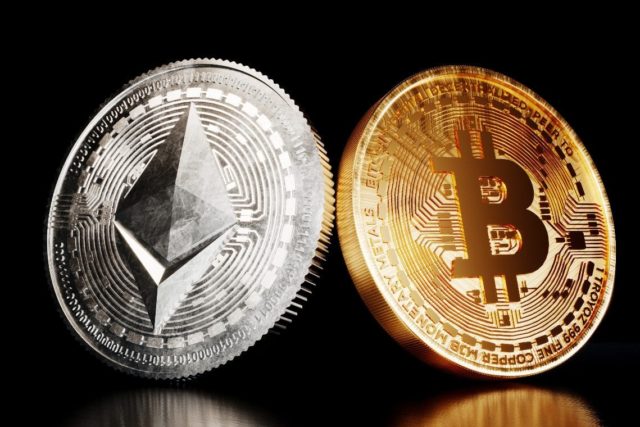- The Mexican Peso strengthens against the US Dollar, and the USD/MXN pair falls below 17.40 after reaching a high of 17.62.
- The fall of the USD/MXN is supported by speculation that the Federal Reserve could stop its monetary tightening.
- US Treasury yields plunged after US CPI report; Traders point to a Fed rate cut in June 2024.
- Banxico Governor Victoria Rodríguez Ceja hinted at the possibility of rate cuts in Mexico, noting that any easing of monetary policy would be gradual and dependent on data.
He Mexican peso (MXN) recovers from US dollar (USD), as investors speculate that the Federal Reserve (Fed) has finished tightening its monetary policy following a softer-than-expected inflation report in the United States (US). The USD/MXN pair fell below 17.40 after reaching a daily high of 17.62, and is about to challenge the 100-day SMA at 17.33 at the time of writing.
Mexico’s scant economic agenda kept operators adrift until the publication of the October Consumer Price Index (CPI) in the US, with figures below estimates and previous readings, both annual and monthly. . The core CPI also slowed, leading investors to buy riskier assets to the detriment of the safe-haven status of the US dollar. As a result, US Treasury yields are plummeting, while traders expect the federal funds rate to hit 5% in June 2024.
Daily moves: Mexican peso rises as US inflation slows, despite dovish comments from Banxico’s Rodríguez.
- The October CPI in the US rose 3.2% year-on-year, below forecasts and the rate of the previous month, respectively at 3.3% and 3.7%. On a monthly basis, CPI inflation was 0%, well below consensus expectations and the September rate, each at 0.1% and 0.4%.
- Core CPI inflation was above 4% year-on-year, below that of September and the estimated 4.1%. On a month-on-month basis, inflation fell to 0.2%, below last month and the forecast of 0.3%.
- Richmond Fed President Thomas Barkin stated that he is not convinced that inflation is on a smooth path towards 2%. He fears more needs to be done to curb inflation.
- On Monday, Banxico Governor Victoria Rodríguez Ceja commented that the easing of inflationary prospects could pave the way to discuss possible rate cuts. She stated that the easing of monetary policy could be gradual, but would not necessarily imply a continuation of rate cuts, adding that the board would consider macroeconomic conditions, taking a data-dependent approach.
- The latest report on inflation in Mexico, published on November 9, showed that prices grew 4.26% year-on-year in October, below forecasts of 4.28% and the previous rate of 4.45%. In monthly terms, inflation stood at 0.39%, slightly above the consensus of 0.38% and 0.44% in September.
- Last Thursday’s hawkish comments from US Federal Reserve Chairman Jerome Powell pushed USD/MXN towards 17.93, before paring some losses.
- Mexico’s economy remains resilient after S&P Global’s October Manufacturing PMI improved to 52.1 from 49.8, and Gross Domestic Product (GDP) expanded 3.3% year-over-year in the third quarter.
- Banxico revised its inflation forecasts from 3.50% to 3.87% for 2024, which remains above the central bank’s target of 3.00% (plus or minus 1%).
Technical Analysis: Mexican peso rebounds with USD/MXN sellers eyeing a break below the 100-day SMA
The USD/MXN pair’s bias has changed to neutral to the downside in the near term, and the pair is about to break crucial support levels such as the 100-day SMA at 17.33, followed by the psychological figure from 17.00. The breakout of these demand zones could open the door to a test of the year-to-date low of 16.62, touched in July.
On the other hand, if buyers hold the exotic pair above 17.33 and recover 17.50 in the near term, they could remain hopeful of testing key resistance levels, such as the 200-day SMA at 17.65, before the 50-day SMA at 17.70. Once overcome, the next resistance lies at the 20-day SMA at 17.87, before buyers can lift the spot price towards 18.00.
Frequently Asked Questions about the Mexican Peso
What factors determine the price of the Mexican Peso?
The Mexican Peso (MXN) is the most traded currency among its Latin American peers. Its value is largely determined by the evolution of the Mexican economy, the policy of the country’s central bank, the volume of foreign investment in the country and even the levels of remittances sent by Mexicans living abroad, especially in the United States. Joined. Geopolitical trends can also move the MXN: for example, the process of nearshoring – or the decision by some companies to move manufacturing capacity and supply chains closer to their home countries – is also seen as a catalyst for the currency. Mexican, since the country is considered a key manufacturing center on the American continent. Another catalyst for the MXN is oil prices, as Mexico is a key exporter of this commodity.
How do Banxico’s decisions affect the Mexican peso?
The main objective of Mexico’s central bank, also known as Banxico, is to keep inflation at low and stable levels (at or near its target of 3%, the midpoint in a tolerance band between 2% and 4%. %). To do this, the bank sets an appropriate level of interest rates. When inflation is too high, Banxico tries to control it by raising interest rates, which makes borrowing more expensive for households and companies, thus cooling demand and the economy in general. Higher interest rates are generally positive for the Mexican Peso (MXN), as they translate into higher yields, making the country a more attractive place for investors. On the contrary, lower interest rates tend to weaken the MXN.
How do economic data influence the value of the Mexican Peso?
The publication of macroeconomic data is key to evaluating the state of the economy and can have an impact on the valuation of the Mexican Peso (MXN). A strong Mexican economy, based on high economic growth, low unemployment and high confidence is good for the MXN. Not only does it attract more foreign investment, but it may encourage the Bank of Mexico (Banxico) to raise interest rates, especially if this strength is accompanied by high inflation. However, if economic data is weak, the MXN is likely to depreciate.
How does general risk sentiment influence the Mexican Peso?
As an emerging market currency, the Mexican Peso (MXN) tends to strengthen during periods of risk appetite, or when investors perceive that broader market risks are low and are therefore willing to engage in investments that carry a higher risk. On the contrary, the MXN tends to weaken in times of market turmoil or economic uncertainty, as investors tend to sell riskier assets and flee to more stable havens.
Source: Fx Street
I am Joshua Winder, a senior-level journalist and editor at World Stock Market. I specialize in covering news related to the stock market and economic trends. With more than 8 years of experience in this field, I have become an expert in financial reporting.







